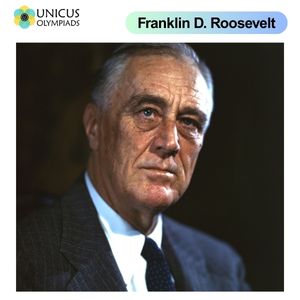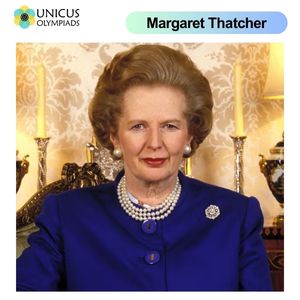

Throughout history, certain leaders have made bold and visionary decisions that have not only shaped the course of their nations but also impacted the global political, economic, and social landscape. These decisions, often made during times of crisis or transition, have sometimes sparked controversy, but they have ultimately led to significant changes, whether through reform, revolution, or radical new directions. This article examines some of the most influential leaders who made bold decisions that transformed their nations, with examples to illustrate the far-reaching effects of their actions.
Franklin D. Roosevelt (FDR), the 32nd President of the United States, is often remembered for his leadership during the Great Depression and World War II. However, it was his bold decisions during the early years of his presidency, particularly the New Deal, that transformed the United States and reshaped its political and economic landscape. Roosevelt’s New Deal programs were designed to address the devastating effects of the Great Depression, providing relief to the unemployed, reforming the banking system, and stimulating economic recovery.

The New Deal was a series of programs and policies enacted by Roosevelt between 1933 and 1939 to help the U.S. recover from the Great Depression. These programs included financial reforms, public works projects, and social welfare initiatives that aimed to provide relief for those suffering from unemployment, poverty, and economic instability.
While the New Deal did not end the Great Depression, it helped stabilize the U.S. economy, restore public confidence, and establish a more active role for the government in economic affairs. FDR’s bold decisions transformed the role of the federal government, paving the way for the modern welfare state and shaping U.S. policies for decades to come.
Nelson Mandela, the first Black President of South Africa, is a global icon for peace, reconciliation, and the struggle against racial injustice. His leadership in the anti-apartheid movement, and his decision to pursue peace and national unity rather than revenge after his release from prison, was a bold and transformative act that ended apartheid and led to the establishment of a democratic South Africa.

Mandela’s decision to negotiate with the apartheid government in the early 1990s was controversial, as it involved compromising with a regime that had oppressed Black South Africans for decades. However, Mandela believed that reconciliation, rather than violence or revenge, was the key to a peaceful transition to democracy.
Mandela’s bold leadership and his focus on forgiveness and reconciliation helped South Africa avoid a civil war and laid the foundation for a new, democratic political system. His decision to prioritize national unity over personal or racial revenge was critical in healing a divided nation and promoting peace and equality. Mandela’s leadership also inspired global movements for racial justice and human rights.
Winston Churchill, the Prime Minister of the United Kingdom during World War II, made several bold and pivotal decisions that not only transformed Britain but also changed the course of history. His leadership during the war, particularly in the early years when Britain stood alone against Nazi Germany, is remembered as one of the most decisive periods in British history.

When Churchill became Prime Minister in 1940, Britain was facing the threat of invasion by Nazi Germany. Many believed that Britain should negotiate a peace settlement with Adolf Hitler. However, Churchill resolutely refused to consider surrendering or appeasing the Nazis. Instead, he chose to stand firm, rallying the British people with his speeches and determination to fight on.
Churchill’s decision to continue the fight against Nazi Germany helped to turn the tide of the war. His leadership not only bolstered British morale but also played a critical role in securing Allied victories in North Africa, Europe, and the Pacific. The success of the Allied forces, combined with Churchill’s commitment to never surrendering, ultimately led to the defeat of Nazi Germany in 1945 and shaped the post-war world order.
Margaret Thatcher, the first female Prime Minister of the United Kingdom, made bold decisions that radically transformed the British economy and society. Known for her strong conservative views and market-oriented policies, Thatcher’s leadership reshaped Britain’s political and economic landscape, moving the country away from a post-war consensus of welfare state policies towards a more neoliberal economic model.

One of Thatcher’s most significant and controversial decisions was to embrace free-market policies, privatize state-owned industries, and reduce the power of labor unions. She believed that these measures would lead to economic growth and individual prosperity, and she argued that the government’s role in the economy should be minimal.
Thatcher’s economic policies, known as “Thatcherism,” are credited with reshaping the British economy. While her policies led to economic growth in some sectors, they also led to increased inequality and the erosion of manufacturing industries in certain regions. Nevertheless, her policies transformed Britain into a more market-oriented economy and set the stage for the economic liberalization that took place in many other countries in the 1980s and 1990s.
Mahatma Gandhi was one of the most influential leaders in the fight for Indian independence from British colonial rule. Gandhi’s decision to lead India through non-violent civil disobedience was a bold and transformative act that not only brought India independence but also inspired global movements for civil rights and social justice.

Gandhi’s decision to use non-violence (Ahimsa) and civil disobedience as tools in the struggle for Indian independence was revolutionary. At a time when many independence movements were advocating for violent uprisings, Gandhi believed that peaceful resistance was the most powerful means of challenging British rule and achieving social change.
Gandhi’s commitment to non-violence and civil disobedience was instrumental in India’s struggle for independence, which was achieved in 1947. His leadership not only transformed India’s political landscape but also inspired global movements for civil rights, most notably the American Civil Rights Movement led by Martin Luther King Jr. Gandhi’s philosophy of peaceful resistance remains a powerful example of how bold, non-violent actions can lead to lasting social and political change.